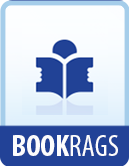His mother, his friends, his books—these were Smith’s three great joys. He had a library of about 3000 volumes, as varied a collection in point of subject-matter as it would be possible to find. Professor Shield Nicholson, who saw a large portion of it, says: “I was most struck by the large number of books of travel and of poetry, of some of which there were more than one edition, and occasionally editions de luxe. I had hoped to find marginal notes or references which might have thrown light on the authorities of some passages in the Wealth of Nations (for Smith gives no references), but even the ingenious oft-quoted author of the Tracts on the Corn Laws has escaped without a mark. At the same time pamphlets have been carefully bound together and indexes prefixed in Smith’s own writing."[284]
Mr. James Bonar has been able to collect a list of probably two-thirds of Smith’s books—about 1000 books, or 2200 volumes.[285] Nearly a third of the whole are in French, another third in Latin, Greek, and Italian, and a little more than a third in English. According to Mr. Bonar’s analysis, a fifth of them were on Literature and Art; a fifth were Latin and Greek classics; a fifth on Law, Politics, and Biography; a fifth on Political Economy and History; and the remaining fifth on Science and Philosophy. One cannot help remarking, as an indication of the economist’s tastes, the almost complete absence of works in theology and prose fiction. Hume’s Dialogues on Natural Religion and Pascal’s Pensees belong as much to philosophy as theology; Jeremy Taylor’s Antiquitates Christianae, Father Paul Sarpi’s History of the Council of Trent, and Ruchat’s Histoire de la Reformation de la Suisse belong as much to history; and except these the only representatives of theology on Smith’s shelves were the English Bible, Watson’s edition, 1722—probably his parents’ family Bible—a French translation of the Koran, and Van Maestricht’s Theologia. The only sermons, except those of Massillon in French, are the Sermons of Mr. Yorick. Those sermons, however, were the only representative of Sterne. Goldsmith was represented by his poems, but not by his fiction; and Defoe, Fielding, Richardson, and Smollett were not represented at all. One or two French




